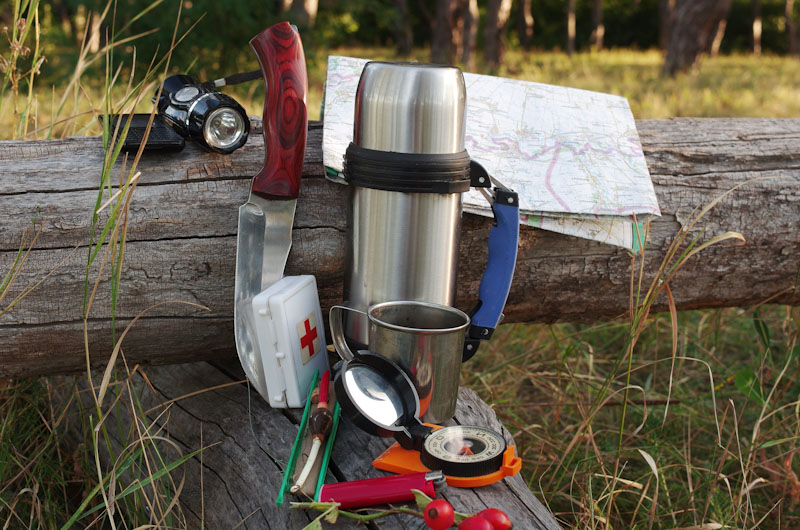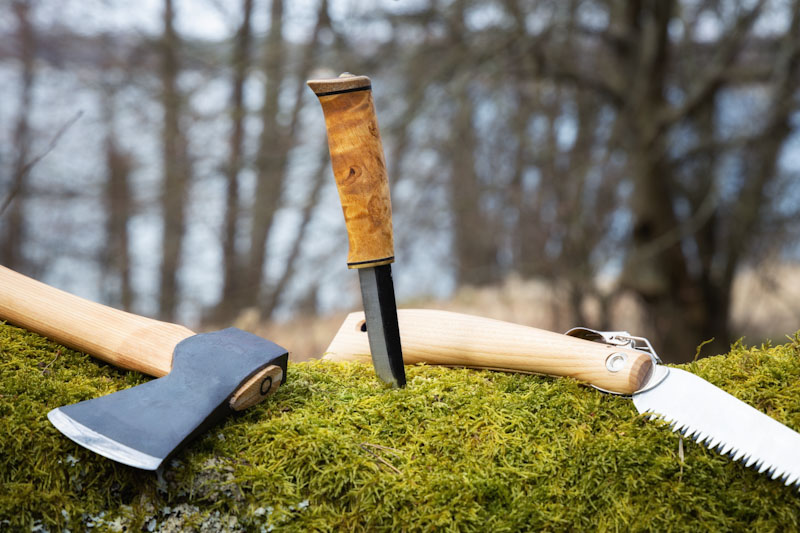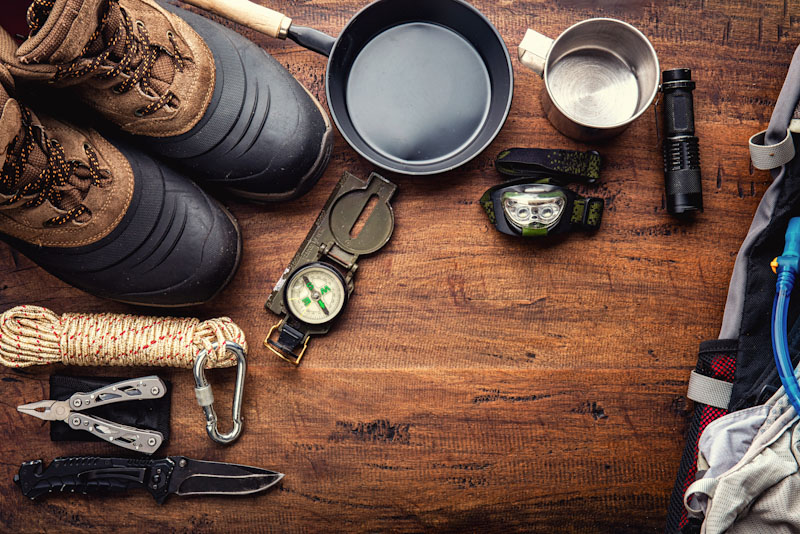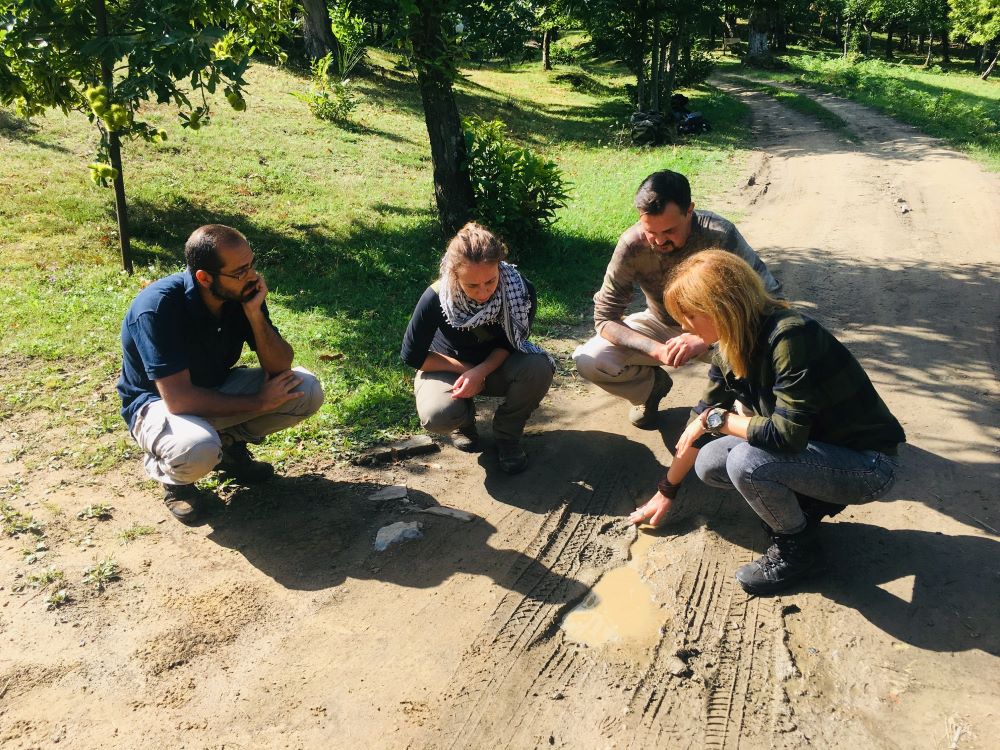As an experienced prepper, I’ve spent years honing my skills and preparing for the unexpected. My journey began with a thirst for knowledge and a deep-seated desire to ensure the safety and well-being of my family and loved ones in times of crisis.
Over the years, I’ve received countless inquiries from readers, each seeking guidance on the essential tools to include in a bug-out bag. It’s a question that resonates deeply with me because, just like you, I understand the importance of being prepared for whatever challenges life may throw our way.
In the world of survival, knowledge is power, and the right tools can make all the difference when faced with adversity. I remember the first time I assembled my bug-out bag, checking lists and recommendations, unsure of what was truly essential. The process was filled with trial and error, but it led to invaluable insights. Today, I want to share those insights with you.
The notion of a bug-out bag isn’t one born out of paranoia or fear; it’s a sensible, proactive approach to being ready for emergencies, be they natural disasters, societal disruptions, or unforeseen events.
It’s about self-reliance and the ability to take care of yourself and your loved ones when standard support systems falter. In this article, I’ll draw upon my years of experience to provide you with a comprehensive guide to the must-have tools that belong in your bug-out bag.
Whether you’re an aspiring prepper looking to begin your journey or a seasoned survivalist in need of an equipment refresh, rest assured that this information is based on practical, real-world experience.
I’ve encountered situations that have tested my skills, and I’ve fine-tuned my gear accordingly. So, without further ado, let’s dive into the world of preparedness and explore the indispensable tools that will help you stay one step ahead when it matters most.
This article isn’t just a list of items but a roadmap to understanding their importance, their versatility, and how they can be used effectively. The tools I’ll discuss have been tried and tested, and they are the result of lessons learned in the field. I’ll walk you through the essentials that will empower you to tackle the unknown with confidence.
Survival isn’t just a matter of collecting gear; it’s about knowledge, adaptability, and a mindset that refuses to yield to adversity. So, grab a notebook, make a checklist, and join me on this journey into the world of must-have tools for your bug-out bag.
The tools
Knives
The significance of a sharp, reliable knife cannot be overstated. It’s not just a tool; it’s often the line between life and death when confronted with challenging circumstances.
Fixed blades are renowned for their durability, making them an excellent choice for survival situations. They’re sturdy, dependable, and built to withstand the harshest conditions. However, in the absence of a fixed blade, a folding knife is certainly better than having no blade at all. It’s a versatile option that can serve you well in various situations.
For those who are willing to invest in a high-quality survival knife in terms of both craftsmanship and cost, I recommend the Benchmade Bushcrafter 162.
What sets certain survival knives apart is their attention to detail. Some models incorporate a hollow handle, a feature that extends the knife’s utility beyond cutting. In this hollow compartment, you can store crucial items from your survival gear arsenal, such as matches, fire steel, or fishing hooks. It’s a small but significant advantage, as every inch of space in your bug-out bag counts when you’re out in the wild.
When selecting your survival knife, it’s essential to prioritize quality. Remember, this tool is more than just an accessory; it’s a lifeline. Investing in a well-constructed, reliable knife can make all the difference when you’re in trouble. As the saying goes, you often get what you pay for, and when it comes to your survival tools, you don’t want to be left with equipment that might break when you need it most.
Fire starting tool
Few tools are as crucial as a reliable fire starter. Fire is not merely a luxury but a fundamental necessity for survival. It provides warmth, protection from the elements, a means of signaling for help, and a way to cook food. Without the ability to kindle a fire, you’re left in the cold, hungry, and shrouded in darkness.
A fire starter, typically made of high-carbon or alloyed steel, simplifies the process of initiating a life-saving fire in any situation. It’s a versatile tool with applications ranging from warmth and protection to signaling and cooking, making it one of the most critical items for survival.
Among others, I own the Coghlan’s Flint Striker. It’s a reliable rod that has never failed me when I need to kindle a flame for warmth, sustenance, or security.
Machete and/or axe
Whether you find yourself in a situation where you’re waiting for rescue or striving to rebuild your life, a heavy-duty axe emerges as an indispensable tool. It serves multiple purposes, from constructing shelters to processing firewood and more.
A forest axe is often a preferred choice in the realm of survival tools. It’s versatile and well-suited for various tasks in a wilderness scenario. For individuals who prefer a more lightweight and space-efficient alternative, a hatchet is an excellent choice.
Hatchets offer the same core functionality as a full-sized axe but in a smaller, more manageable package. This makes them particularly suitable for those who may not be as physically fit or struggle with carrying heavy and bulky bug-out bags. Hatchets, with their compact design, are easier to handle and can be wielded effectively for chopping, splitting, and other essential tasks.
For some, a machete might be the preferred option over an axe. While a machete offers agility and is ideal for slashing through underbrush and light vegetation, an axe is better suited for heavy-duty chopping and splitting tasks.
Water filtration
Water takes center stage as the ultimate necessity regardless of whether you find yourself in a survival situation or not. It’s the difference between life and death. In my opinion, as I’ve stated before, we must all focus on the critical role of water purification systems.
Whether it’s a filter straw or a more advanced pump, a water purification system is non-negotiable. I own various survival filters, and in my bag, there’s a water filter straw. I also carry on my belt a water bottle that has a water filter incorporated. Additionally, carrying water purification tablets is a wise idea.
And if you find yourself lacking water filtration or purification methods, don’t forget the power of fire. The ability to start a fire enables you to purify water by boiling it, offering an alternative method to ensure your hydration needs are met.
Compass
The compass, used since the dawn of exploration, is a tool that has often taken a back seat to modern technologies like GPS. However, in dire circumstances, reliance on GPS with limited battery life can prove problematic. A compass, on the other hand, stands as a steadfast and long-lasting solution, drawing its power from the Earth’s magnetic field.
Compasses have a proven track record of reliability. They don’t rely on external power sources and can serve you for extended periods without fail. Suunto, a Finnish company, offers a range of high-quality field compasses, suitable for all types of bug-out bags, whether large or small. When complemented with topographical maps, a compass becomes a formidable navigation tool, enabling you to find your way with confidence in various terrains.
Multi-tool
A good multi-tool is a true game-changer. Whether you’re at home or out in the wild, it can significantly enhance your ability to work with your hands. While Leatherman is known for popularizing these versatile tools, I personally favor my Gerber Diesel.
Regardless of the brand you choose, it’s essential to ensure that your multi-tool includes multiple blades. This versatility is crucial, as some tools that are handy for household tasks may be of little use in the wilderness.
Rope
If you plan to bug out into the woods, it’s essential to acknowledge the invaluable utility of a reliable length of rope. Among the multifaceted tools in your arsenal, rope stands out as a true jack-of-all-trades, boasting an impressive versatility that allows it to excel across a wide spectrum of survival scenarios. What’s more, despite its incredible functionality, it possesses the remarkable trait of taking up very little precious space within your survival kit.
Now, when it comes to the varieties of rope, a well-rounded selection should include climbing rope, braided rope, twisted rope, and twine, each catering to distinct needs and challenges that may arise during your wilderness outing.
However, at the core of your survival toolkit, the one type of rope that should be considered non-negotiable is the parachute cord, more commonly referred to as the 550 cord. The paramount factor to remember when sourcing parachute cord is its authenticity. It should be a genuine military-grade paracord, a hallmark of strength and durability that has been meticulously designed to meet the most stringent standards.
Shelter covering
One fundamental aspect to consider is the need to construct a robust and dependable shelter. However, it’s important to recognize that in the initial stages or during short-term survival situations, the primary requirement is for a swift means of securing protection from the elements, enabling you to stay covered and dry.
In this context, resourceful options such as survival blankets (often referred to as wraps), tarps, or even heavy-duty construction-grade garbage bags can serve as your lifelines. For more readily available alternatives, tarps and sturdy bags can be conveniently sourced from your local hardware store, ensuring that you have swift access to materials that can be fashioned into improvised shelters and protective coverings as needed.
It’s pivotal to acknowledge the practical significance of these materials for temporary shelter. They provide a vital bridge to safeguarding yourself against the elements in the immediate term, which can be essential for your well-being as you navigate the challenges of survival. The versatility of these resources, coupled with their ability to provide protection and insulation, underlines their importance as essentials in your survival kit.
Nutrition
In a survival situation, ensuring access to proper nutrition is paramount. Your physical and mental well-being hinges on obtaining adequate sustenance, and your bug-out bag should include tools and items that facilitate this.
While I do have various food rations and high-calorie snacks or protein bars in my bags, I believe folks should concentrate more on the means to obtain food since the food you bring along won’t last. A good knowledge of the area you live in is essential because it provides key information on what you can eat out there.
If you know what food you can obtain from your environment, you also have to make a self-assessment and decide which skills you can employ to procure your next meal. For most folks, adding a fishing kit is pretty much it, and they won’t bother trying other food-procuring methods. In my case, foraging plays an important role in my life, and I test my skills with every occasion I get. Others may rely on trapping or hunting.
The key idea here is that your bug-out bag should also include the tools needed for food procurement in case something happens and you need to extend your stay in an unfamiliar environment. Sure, you can bring cash along, but there’s no guarantee that the nearest Burger King is still open when the brown stuff hits the fan.
First aid kit
One of the most essential items to have in your bug-out bag, car, or wilderness cache is a comprehensive first aid kit. This kit is essentially a collection of vital tools that can be a lifesaver in challenging situations. It’s an indispensable resource that should never be underestimated.
At a minimum, your first aid kit should include a range of crucial components, such as bandages, antiseptic wipes (or alcohol), cloth tape, ointment, tweezers, gloves, scissors, a space blanket, aspirin, antihistamine, and pain relievers.
In the past, I’ve used to recommend various first aid kits, but there are now so many meticulously curated kits that it becomes impossible to keep track of all of them. Over the years, I’ve started to assemble my own first aid kits by buying individual items, and I recommend you do the same. If you follow this practice, you will be able to check and test every item, and you will also be encouraged to research how the items can be used and if they have a multi-purpose use.
Pairing the kit you build or buy with a fundamental understanding of basic medical care or, at the very least, a mini-instruction booklet can significantly enhance your preparedness in the face of injuries and medical emergencies during your bugging-out journey.
Concluding
It’s important to underscore that while my must-have tool recommendations are particularly geared toward wilderness use, their versatility and utility extend to any environment. These items are not only valuable in the great outdoors but can also prove invaluable in urban or suburban settings when confronted with unforeseen emergencies.
For those who, like myself, prefer the solitude and self-reliance offered by the wilderness during a disaster, having a well-equipped bug-out bag with the right tools can make all the difference in ensuring your ability to navigate and thrive in challenging circumstances. The privacy and resources provided by nature can become a sanctuary when densely populated areas face crises. In the end, the most vital aspect of preparedness is your commitment to being self-sufficient and equipped to face whatever challenges life may throw your way.










Dean Thompson | December 19, 2023
|
Hi,
I agree with most of what you said that you need.
I disagree with 1 thing. You should always have a full tang knife that has good quality blade.
I have collected knives since I was 5 and I am now 61 years old. A knife that is not full tang will break when you use it for batoning . My parents showed my sister and I how to live in the woods of Pennsylvania.
I am still very happy that you are out there helping people.
Dean
Jeff Chapman | December 25, 2023
|
Good call. I was coming down to the comments to say the same thing. Those hollow-handle rambo knives are no good. The blades are attached to the handle with glue or something that is not secure if you have to use your knife ruggedly.
Shya | December 19, 2023
|
I like much of what you’re saying, but I’m going to beg to differ with your comment regarding the hollow knife handle (we all have opinions, right? )
I have owned a couple, and invested some time examining a few other ones, but none seemed to be anywhere NEAR as well made as even a basic, decently made full tang knife. Yes, that little space is a handy feature, and it can hold some useful items, especially if you’re careful how you load it, but the amount of space is very minor if that same space is used up elsewhere in our packs. And the reliability of that crucial knife isn’t really worth the sacrifice of the room. You can even sneak all that other stuff inside a baseball cap! Yup, got one of those with the hidden pockets,,,,,,,,,
Love that you back up your water purification methods! It might be different if we decided to use backups of our good knives, but that’s also part of the good quality multi tool. My partner in crime has another full tang one, and she prefers it.
Steve Mc | December 22, 2023
|
I find a high quality flashlight is a top tool. Preferably powered by either CR123 or optionally 18650 rechargeable. Of all the tools I have, a light and a knife are what I use most.